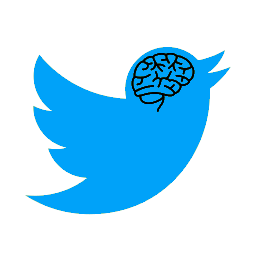Equipment
As a follow up to part 1 I’d like to take some time to talk about some of the devices I use to help me listen to audio books and get to sleep.
When I was single, I mostly listened to audiobooks on my phone speaker or on something like a Homepod Mini in my bedroom. However, once I was married, my wife and I wanted to listen to different books and that meant we needed headphones so we would not disturb the other person.
A surprising benefit of this was that the headphones also kind of act like ear plugs, blocking out street noise of which there is a A LOT in NYC.
Sleepytime Headphones
The best headphones for most people are the Sleeper Wireless headphones from sleeperbuds.com

⭐️⭐️⭐️⭐️⭐️
ALL sleep headphones will take some time to get used to, but these are some of the easiest to use, lightest, most comfortable and at $30 you can’t really go wrong.
I first discovered these on https://www.adv-sound.com/ after visiting their booth at CanJam in NYC. In general they are quality headphones at very reasonable prices. They eventually spun this product line off to https://sleeperbuds.com specifically for these. They were also the very first headphones I found specifically billed as being for sleep.
Since then a number of other headphones specifically for sleep have cropped up, but are less great in sometimes small and sometimes big ways.
Gotchas
Because there ear tips aren’t swappable they may not fit very well in your ears or provide the best seal against outside noise depending on the shape of your ear
The Upgrade Pick

⭐️⭐️⭐️⭐️⭐️
Significantly more expensive than sleeper buds, but cheaper than Kokoon, these earbuds are basically perfect.
Lots of fit options to swap to find both he most comfortable fit, but also the best noise isolation for your ear shape.
Battery lasts easily all night. Case and headphones appear to be able to charge at the same time. They are true wireless meaning no cables pulling on you as you turn at night. Low profile for side sleeping.
https://www.sleepphones.com/
⭐️⭐️⭐️
These originally were pretty good in terms of comfort and sound quality but after a design change made the headphones themselves out of a harder plastic, they became too uncomfortable. They also tended to slide around on my head as I tossed and turned at night.
They also don’t do a great job of blocking out street noise, so I had to pair them with some standard ear plugs for life in NYC
Kokoon Nightbuds

⭐️⭐️
Crazy Expensive at $250. I had originally backed these on Kickstarter. They were comfortable, the sound was good. Some of the buttons for adjusting volume broke after a few months of use and when I reached out to customer support they said it was out of warranty (less than a year?).
The sleep tracking never really worked for me, it would always shut off too soon and I’d have to restart my book as I was drifting off to sleep.
This was all before they were purchased by Philips so I don’t know how the product quality or customer support quality have changed since the acquisition.
Honorable Mention
Advanced Sound Group ADV. Sleeper TWS

⭐️⭐️⭐️⭐️
I wanted to love these. They are very nearly perfect except for some critical flaws.
These are the best fitting, best sounding sleeper ear buds. They are true wireless which means no cord pulling on you when you turn over. They last 5 hours which is plenty of time to fall asleep. They also feature active noise cancelation making them even better at blocking out unwanted street sounds than any other headphones I’ve tried.
When these first came out I bought a couple pair as they were only $80 (most sleep earbuds are well over $100+ and often closer to $200+). The first night they startled me awake by very loudly announcing “LOW BATTERY!”
I emailed customer support asking if there was anything they could do on the Firmware, they had a meeting and made the change, offered to re-flash my headphones for free if I just sent them in. Amazing. Every pair I ordered after that did not have the annoyingly loud low battery alert and instead would just die silently when they ran out of battery. Perfect
But all was not well, and I guess that’s why they’ve abandoned this product. The big issue is charging. The case and headphones don’t charge as one would expect, or at least if you’ve ever used AirPods you’ve come to expect that you can charge both the case AND the ear buds at the same time but that’s not the case here and it breaks my heart.
Instead it seems like you have to charge the case, and then charge the earbuds. Meaning you can’t just take them off in the morning, pop them in the case, pop the case on the charger (they offer wireless charging) and be on with your day confident that you’ll have fully charged headphones that night. Instead you’re surprised at bedtime when you take the case off the charger that your ear buds have no power at all 🙁
The best workflow I managed to come up with was:
- Take ear buds out of charging case
- Put charging case on charger
- In the morning remove charging case from charger
- Put earbuds in charging case OFF charger
I found this difficult enough to keep up with that I removed a star and can only give these 4 stars even though they are perfect in almost every other way.
The other issue was with connectivity between the two ear buds. I would pretty regularly only get sound out of 1 year. You could sometimes get the other ear to work if you put it back in the charging case for a second and then put it back in your ear, but not always.



